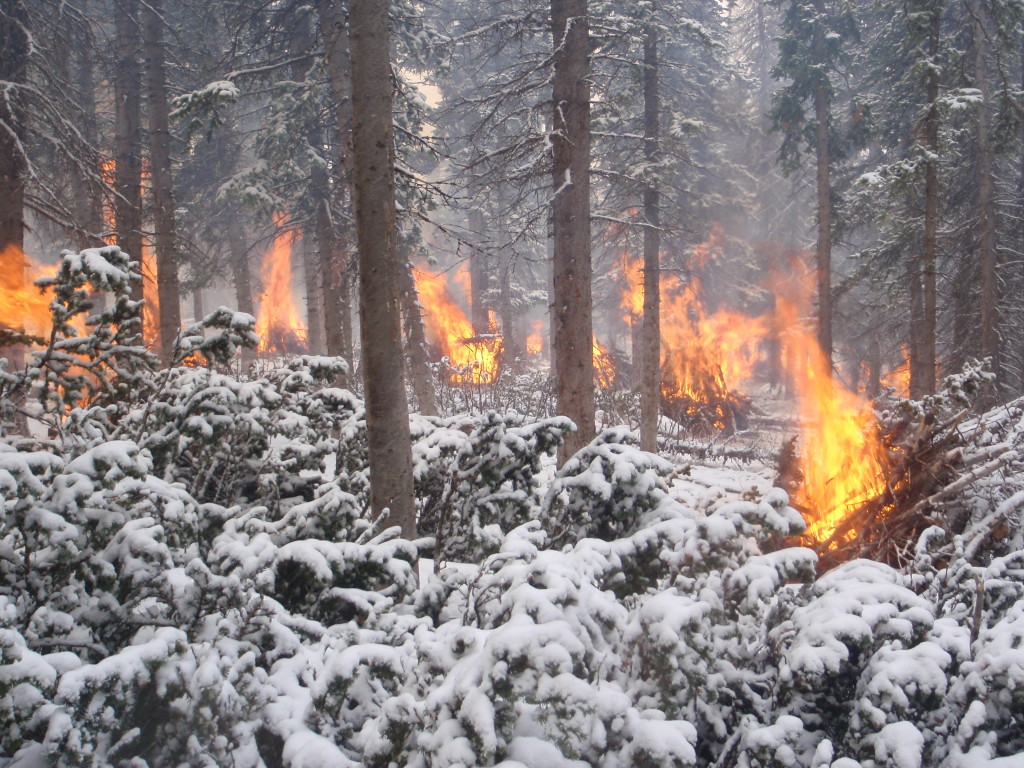 As I was driving down to the Nederland transfer station yesterday, I saw a curious sight – a single file line of firefighters walking down Ridge Road, complete with Nomex yellow shirts, green pants and hard hats. It seemed so out of place with the 3-foot banks of snow lining the roads and piled up in the woods. It took me a moment to recognize that they were firefighters. Sure enough, my suspicions were confirmed as I passed two separate engine trucks identifying them as U.S. Forest Service fire crews. Why were they out and about in the snow and bitter cold weather?
As I was driving down to the Nederland transfer station yesterday, I saw a curious sight – a single file line of firefighters walking down Ridge Road, complete with Nomex yellow shirts, green pants and hard hats. It seemed so out of place with the 3-foot banks of snow lining the roads and piled up in the woods. It took me a moment to recognize that they were firefighters. Sure enough, my suspicions were confirmed as I passed two separate engine trucks identifying them as U.S. Forest Service fire crews. Why were they out and about in the snow and bitter cold weather?
Well, strange as it may seem, there is no better time to have a fire than now. Even though it’s hard to imagine during one of our snowiest months ever, wildfire season is just a few months down the road. And though it is controversial, prescriptions burns done now can do a great deal towards mitigating wildfire risk this summer. So, when snow is on the ground, and temperatures are cold, it’s not uncommon to see small fires on the Forest Service land that dots the landscape around Nederland and other mountain towns.
When I worked at Sequoia National Park as a Park Ranger, I had the opportunity to participate in the planning and interpretation of prescribed burning done at the park. Fire is an integral part of Sequoia regeneration and plays a big part in keeping the forest healthy. Forest ecologists estimate the natural fire cycle for sequoia groves was a mere 8-20 years. So, the fire management crew there performed prescribed burns not just to mitigate wildfire risk, but to keep the forest healthy.
Here in the Rocky Mountains, the natural fire intervals are much greater, sometimes reaching up to 200 years, but with the recent pine beetle killed trees and dead and down wood, prescribed burning can be a proactive and safe way to limit the amount of fuel, and help keep our forests healthy too. And though we don’t have any Sequoia trees growing here, the mountains are full of another tree that very much depends on fire as well — Lodgepole Pines. The cones of the lodgepoles are tightly sealed with resin that needs very hot temperatures to open and release seeds — the type of heat that only forest fires can provide.
Because of the catastrophic fires Colorado has suffered in recent years, the state and federal governments have approved spending on much more aggressive wildfire mitigation, which includes prescribed burning. So at a time when the furthest thing from most of our minds are hot summer temperatures and fires, local fire managers are planning and lighting fires to save us all from disasters later on. So while the snow is abundant, and air is moist, there is not better time to burn, baby, burn.

